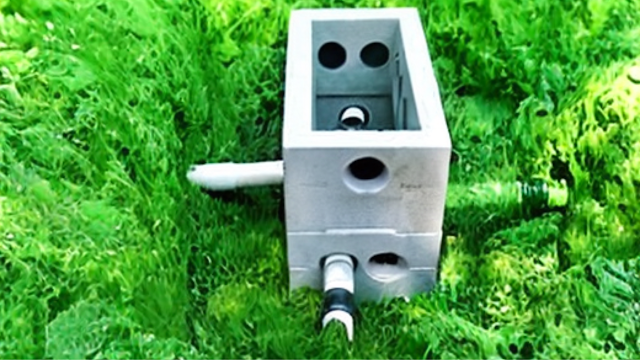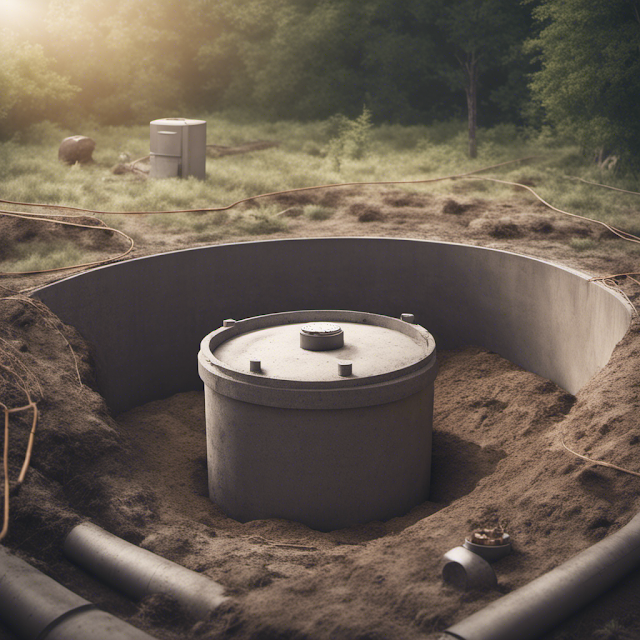Septic Inspection Cost the Complete Guide
The Ultimate Guide to Septic Inspection Cost
Are you a homeowner? Do you rely on a septic system for your wastewater treatment needs? If so, then septic inspection is an essential part of maintaining your septic system's health and ensuring it functions properly. In this article, we will provide you with the ultimate guide to septic inspection, including when to get an inspection, types of inspections, how to choose an inspector, what to expect during an inspection, factors that affect septic inspection cost, and much more.Septic Inspection Cost: Insights from Industry Experts
With a combined experience of over four decades, my wife Jeane and I have encountered various scenarios and obstacles in the septic tank industry. As seasoned professionals, we are eager to share our invaluable knowledge, which we have amassed throughout our careers, with current septic system owners and those contemplating a new installation. This blog is dedicated to providing helpful information and guidance on septic inspection costs and other related topics.
Section 1: What is Septic Inspection?
Septic inspection is the process of assessing the condition and function of a septic system. A septic system is an underground system that collects and treats wastewater from a home or building. A septic inspection is typically performed by a professional inspector who assesses the condition of the system and identifies any potential issues that need to be addressed.
Section 2: When to Get a Septic Inspection
It is important to get a septic inspection at regular intervals to ensure the proper function of your septic system. The frequency of septic inspection will depend on several factors, including the size of the tank, the number of people in the household, and the age of the system. As a general rule, it is recommended to schedule septic inspection every three to five years. However, if you have a larger household or an older system, you may want to schedule inspections more frequently.In addition, there are several signs that indicate you need a septic inspection, including:
- Slow Drains: If your drains are slow, it may be an indication of a clogged or failing septic system
- Odors: Foul odors around the septic system or inside the home may indicate a problem with the system.
- Standing Water: If you notice standing water or wet areas around the septic system or drain field, it may be a sign of a problem.
- Backup: If sewage backs up into your home, it is a clear sign that there is a problem with your septic system.
If you notice any of these signs, it is important to schedule a septic inspection as soon as possible to identify and address any potential issues.
Section 3: Types of Septic Inspection
There are several types of septic inspections, including:- Visual Inspection: A visual inspection is a basic inspection of the septic system that involves a visual assessment of the septic tank, drain field, and other components of the system.
- Pumping Inspection: A pumping inspection involves pumping the septic tank to assess the condition of the tank and identify any potential issues.
- Dye Test: A dye test involves adding dye to the septic system to identify leaks or other issues.
- Pressure Distribution Inspection: A pressure distribution inspection involves measuring the pressure in the distribution lines to ensure that the system is functioning properly.
The type of septic inspection you need will depend on several factors, including the age and condition of the system and the reason for the inspection.
Section 4: How to Choose a Septic Inspector
Choosing the right septic inspector is important to ensure that the inspection is done properly and accurately. Some factors to consider when choosing a septic inspector include:
Experience and Qualifications: Look for a septic inspector with experience and appropriate qualifications. Check for licensing and certification to ensure that the inspector is qualified to perform the inspection.
Reputation: Read reviews and ask for referrals from trusted sources to ensure that the inspector has a good reputation.
Cost: Get multiple quotes from different inspectors to compare costs and ensure that you are getting a fair price.
Communication: Choose an inspector who communicates clearly and effectively to ensure that you understand the inspection process and any potential issues identified.
Experience and Qualifications: Look for a septic inspector with experience and appropriate qualifications. Check for licensing and certification to ensure that the inspector is qualified to perform the inspection.
Reputation: Read reviews and ask for referrals from trusted sources to ensure that the inspector has a good reputation.
Cost: Get multiple quotes from different inspectors to compare costs and ensure that you are getting a fair price.
Communication: Choose an inspector who communicates clearly and effectively to ensure that you understand the inspection process and any potential issues identified.
Section 5: What to Expect During a Septic Inspection
During a septic inspection, the inspector will assess the condition and function of the septic system. The inspection may involve the following steps:
At the end of the inspection, the inspector will provide a report detailing the condition of the system and any potential issues that need to be addressed.
- Visual Assessment: The inspector will visually assess the septic tank, drain field, and other components of the system.
- Water Flow Test: The inspector may run water through the system to assess the flow rate and identify any potential issues.
- Dye Test: The inspector may perform a dye test to identify leaks or other issues.
- Pumping: The inspector may pump the septic tank to assess the condition of the tank and identify any potential issues.
At the end of the inspection, the inspector will provide a report detailing the condition of the system and any potential issues that need to be addressed.
Section 6: Factors that Affect Septic Inspection Cost
The cost of septic inspection will depend on several factors, including:- Type of Inspection: The cost of the inspection will depend on the type of inspection required.
- Size of the System: The larger the septic system, the more it will cost to inspect.
- Location: The cost of septic inspection may vary depending on your location and local regulations.
- Accessibility: If the septic system is difficult to access, it may cost more to perform the inspection.
It is important to get multiple quotes from different inspectors to compare costs and ensure that you are getting a fair price.
 |
| Septic Inspection cost varies on location |
Section 7: Septic Inspection Checklist
If you are preparing for a septic inspection, here is a checklist of things to do to prepare:- Locate the septic system and ensure that it is accessible
- Provide a copy of the property map or survey to the inspector.
- Ensure that all components of the septic system are accessible, including the tank, drain field, and distribution box.
- Provide documentation of any previous septic inspections or repairs.
- Be prepared to provide access to the home's interior if necessary.
Section 8: Common Septic System Issues
There are several common issues that can affect the function of a septic system, including:- Clogs: Clogs can occur in the pipes leading to the septic tank or in the tank itself.
- Leaks: Leaks can occur in the septic tank, pipes, or drain field, and can cause environmental damage.
- Overloading: Overloading can occur when too much water is used or when non-biodegradable items are flushed down the toilet.
- Aging Systems: Older septic systems may be more prone to failure or may not be up to current code standards.
It is important to address any issues identified during a septic inspection as soon as possible to prevent further damage to the system.
Section 9: Legal Requirements for Septic Systems
Depending on your location, you may be required to comply with local regulations and requirements for septic system repair or replacement.It is important to work with a reputable septic contractor to address any issues identified during a septic inspection. A professional contractor can provide guidance on the best course of action and ensure that the repair or replacement is done properly and safely.
Maybe not for everyone but Septic Inspection cost-saving DIY Style
Section 10: Preventative Maintenance for Septic Systems
Preventative maintenance is key to ensuring the longevity and proper function of your septic system. Some precautions you can take to prevent septic system issues include:- Regular Pumping: Schedule regular septic tank pumping to prevent clogs and backups.
- Water Conservation: Be mindful of water usage and take steps to conserve water to prevent overloading the septic system.
- Proper Waste Disposal: Avoid flushing non-biodegradable items down the toilet or pouring grease and oils down the drain.
- Vegetation Control: Keep trees and other vegetation away from the septic system to prevent damage to pipes and other components.
- Inspections: Schedule regular septic inspections to identify and address any potential issues before they become major problems.
By taking these steps, you can help prevent septic system issues and ensure the proper function of your system.
Section 11: Home Buying and Septic Inspection
If you are buying a home with a septic system, it is important to schedule a septic inspection before finalizing the purchase. A septic inspection can identify any potential issues with the system and help you make an informed decision about whether to proceed with the purchase.Section 12: Home Selling and Septic Inspection
If you are selling a home with a septic system, it is important to schedule a septic inspection before listing your home for sale. A septic inspection can identify any potential issues with the system and allow you to address them before potential buyers become aware of them. Providing documentation of any recent septic inspections or repairs can also help alleviate concerns for potential buyers.
Septic Inspection for Home Selling
Section 13: Buyers and Sellers - What You Need to Know
Buyers:
- Schedule a septic inspection before finalizing the purchase of a home with a septic system.
- Review the septic inspection report carefully and ensure that all issues are addressed before closing on the property.
- Consider negotiating with the seller regarding the cost of any necessary repairs or replacement.
- Be prepared to walk away from a home with significant septic system issues.
Sellers:
- Schedule a septic inspection before putting your home on the market.
- Address any necessary repairs or maintenance before listing your home for sale.
- Provide documentation of any recent septic inspections or repairs to potential buyers.
- Be prepared to negotiate with buyers regarding the cost of septic system repairs or replacement.
- Consider offering a warranty or guarantee for the septic system to alleviate concerns for potential buyers.
Section 14: Conclusion
Regular septic inspection is essential to ensure the proper function and longevity of your septic system.By understanding the signs that indicate you need an inspection, types of inspection, how to choose an inspector, what to expect during an inspection, factors that affect septic inspection cost, and more, you can make informed decisions regarding the maintenance and repair of your septic system.
Whether you are a homeowner or buying or selling a home, a septic inspection is an important part of ensuring the safety, health, and value of your property.
.png) |
| The Septic Tankers |
Research used and Fact Checked
Jeane and Michael Sadler
The Septic Tankers
BLOG POSTS
.png)
%20(1).png)





.png)




Comments
Post a Comment